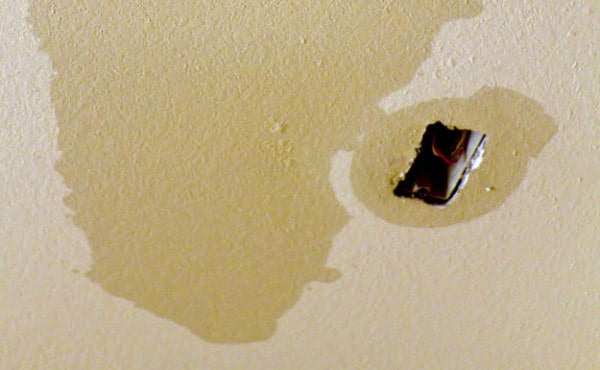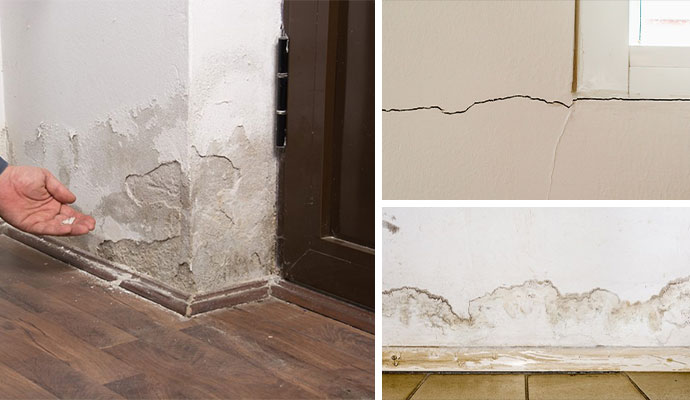Master The Art Of Identifying And Repairing Water Stains On Walls
Master The Art Of Identifying And Repairing Water Stains On Walls
Blog Article
We have stumbled upon this great article involving Indicators of Water Damage Behind Walls down the page on the web and felt it made good sense to share it with you in this article.

Water discolorations on wall surfaces are not positive to the eyes. Occasionally it appears nearly unavoidable to experience water spots on walls in homes.
Homeowners staying in moist areas regularly handle the worry of water stains on walls. Yet that does not need to hold true for you. With well-rounded and exact information on the causes of water discolorations and also timely repair procedures, you will always be a step ahead of such occurrences. So, this short article promises to be an useful guide for you.
3 Typical Reasons For Water Stains on Wall Surfaces
Unlike popular belief, water stains on wall surfaces do not always stem from inadequate structure materials. There are several root causes of water stains on wall surfaces. These include:
Poor Water drainage
This will certainly avoid water from permeating into the wall surfaces. This links to extreme moisture that you discover on the wall surfaces of your building.
So, the leading root cause of damp walls, in this situation, can be a poor water drainage system. It can additionally be due to inadequate administration of sewer pipes that go through the building.
Wet
When hot damp air meets dry cool air, it causes water droplets to base on the walls of structures. This occurs in bathroom and kitchens when there is heavy steam from food preparation or showers. The water droplets can discolor the bordering walls in these parts of your residence and spread to other areas.
Moist or condensation influences the roof as well as wall surfaces of structures. This causes them to show up darker than various other areas of the house. When the wall surface is wet, it develops an appropriate atmosphere for the development of fungi as well as microorganisms. These might have damaging results on health, such as allergic reactions and also respiratory disorders.
Pipe Leaks
The majority of houses have a network of water pipes within the wall surfaces. This ensures that the pipelines are well away from the reach of devastating rodents. It always boosts the viability of such pipelines, as there is little oxygen within the walls. This inhibits rust.
Yet, a disadvantage to this is that water leakage impacts the walls of the structure and triggers prevalent damage. A dead giveaway of defective pipelines is the appearance of a water tarnish on the wall surface.
Water Stains on Wall Surface: Repair Tips
Home owners would generally desire a quick fix when dealing with water discolorations. They would certainly soon understand this is counterproductive as the water discolorations reoccur. Right here are a couple of helpful suggestions that will certainly lead you in the repair of water stains on walls:
Pro Pointer
A houseplant in your house additionally raises its humidity. If the house is already humid, you may want to introduce houseplants with marginal transpiration. An instance of appropriate houseplants is succulents.
Verdict
No one desires to have water stains on walls in their residence, it can take place to the best of us. This post gives you take advantage of, as you currently recognize how to manage this problem if it does occur.
It is always best to hire specialist services to assist deal with the problems in your home.
In some cases it appears virtually unavoidable to experience water stains on wall surfaces in residences.
In contrast to preferred idea, water spots on wall surfaces do not constantly stem from inadequate structure products. There are numerous causes of water stains on walls. The water droplets can stain the surrounding wall surfaces in these components of your residence and also spread to various other locations.
Below are a couple of helpful tips that will guide you in the repair of water stains on wall surfaces:
CHECKING FOR WATER DAMAGE
Water damage can be costly, and it may begin before you even notice the first signs of trouble. Water damage can cause mold and mildew in your walls and floors, which can create an abundance of health concerns for your family. It can also lead to costly repairs of various appliances and general home fixtures. To avoid the pricey consequences of water damage, here are Warner Service’s top 5 places you should check:
The walls – The easiest place to spot the beginnings of water damage is on the walls and ceilings of your home. If water damage is present, there will most likely be water stains, especially around the windows and doorframes, and/or cracks in the drywall. If a stain looks unusual (discolored to brown, black or gray, raised texture), has a swollen appearance or is soft to the touch, contact a professional immediately. The pipes – To avoid water damage, consistently check the pipes in your kitchen (especially the dishwasher and ice maker), bathrooms, laundry room (specifically washing machines) and basement for corrosion, leaks and water stains. Pay special attention to where the pipes connect in your home and the location of caulking around the bathroom fixtures, including toilets, sinks, showers and tubs. Missing or loose caulking and grout could be signs of leaking water. This seepage can also quickly cause mold and rust, so double check your water heater and tank for wet spots on the floor. The floor – Water damage is very easy to spot on the floor. Look for any warping or buckling of the material, especially in the basement. If your home has wood flooring, look for bright white or dark stains. If your home has carpeting, keep it dry and clean. A damp carpet that smells of mold could cause water damage and health problems. To avoid this, consider installing floor pans under your appliances to help prevent damages from small, slow and undetected leaks. The basement and attic – If your basement or attic smells odd check for mold and mildew around the area, especially the valley where the roof meets. While you are inspecting those areas, check for wall cracks, floor stains, rust and dampness in the insulation. If you live in a colder and/or rainier climate, perform routine checks for water damage from melting snow or ice and rain. The exterior – Check the roof for damaged flashing and missing, cracked or curled shingles. There should also be no standing water anywhere outside your home. This could be caused by puddles, leaky rain gutters or hoses, poor drainage, or short gutter spouts. Invest in a sump pump system or water flow monitoring system, and perform routine maintenance on these outdoor appliances to avoid indoor water damage.

I was made aware of that article on Indicators of Water Damage Behind Walls from a good friend on our other web property. Be sure to take the time to distribute this write-up if you enjoyed reading it. We enjoy reading our article about How to Find and Repair Water Leaking in the Wall.
Schedule Your Service
Report this page